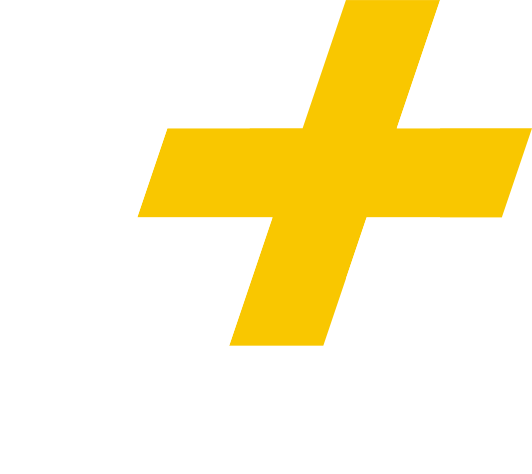Mutual Aid, Extremely Online
[Patrick T. Fallon / AFP]
A year into the pandemic, many mutual aid efforts are still going strong, an impressive feat for small groups run informally by neighbors. But their success also illustrates the continued, desperate need of a public that has been largely left to fend for itself outside of paltry federal payments and underwhelming local responses to evictions and hunger. To keep up with requests for mutual aid, these groups have turned to technology to automate and scale their operations. Here’s how three groups are using tech to help their communities. Beware: nerdy details ahead.
Crown Heights Mutual Aid
Crown Heights Mutual Aid connects and dispatches volunteers with requests for groceries, child care resources, over-the-counter medication and more in the Brooklyn neighborhood of Crown Heights. Most of their day-to-day work is done in Slack, Google Docs and Zoom.
In the wake of the pandemic, the team wrote an app to help streamline aid request intake and delivery processes. The app is available on GitHub for other people looking to automate their mutual aid distribution. CHMA’s process works like this:
The person looking for mutual aid calls the hotline and leaves a message.
The app automatically files the message into Trello, a task management platform.
Then an intake volunteer works through the Trello list, listening to all the messages and calling people back. The volunteer adds people’s information and requests to a list in Airtable, a platform for creating databases.
The information in Airtable is automatically posted to Slack, the messaging platform, and another volunteer claims the request.
The volunteer buys the groceries, delivers them and marks the request as completed.
The volunteer then posts a reimbursement request with the total paid into another Slack channel. Other members then send the volunteer funds over Venmo, the mobile-based payment app owned by PayPal, and reply to the Slack message with how much they paid. CHMA also uses their recurring monthly donations collected via ioby, a crowdfunding platform, to cover costs.
Once reimbursed, the request is moved to a different Airtable list that is hidden from a majority of volunteers.
Will R., a mutual aid volunteer, told me via email that the app is controlled by Node.js, a platform that executes JavaScript, and hosted on the cloud platform Heroku. The app can also swap Slack with SMS, so volunteers could claim and reimburse mutual aid requests via text instead of Slack, which would lower the barrier to participate.
“At the end of the day, it's still humans talking to humans, helping each other during a time of crisis,” Will said.
Mutual Aid Diabetes
Mutual Aid Diabetes is a resource hub for diabetics, through which people can ask for help with getting insulin, prescriptions, insurance and other diabetes supplies, and can direct supporters to people who need supplies or financial support.
Allie, a member of the MAD leadership team, told me via email that they use Airtable, Discord (a chat service) and Google Suite for their work. People can submit requests for aid using forms from Airtable embedded on the group’s website. The requests then appear automatically in their Discord channel, and, from there, the team uses a combination of Gmail and Google Voice, a text and call platform, to match the person’s request with resources or aid. They also use Airtable sheets to share the requests on their website and social media to boost requests.
Pocket Change Pools
Pocket Change Pools is an unusual mutual aid platform: They aren’t based in a particular city or limited to a particular cause, but rather “pool” money together from donors, typically from their follower base, for other mutual aid groups, independent organizations and even individuals. On Instagram and Twitter, they share 2-3 pool requests per week with information on how people can give funds, and then redistribute these funds through various platforms. Though Pocket Change Pools is on a hiatus until April, Janeé, a software engineer on their team, shared the tools behind their pooling processes.
Starting in July, their initial team of three would organize through text message, but they have since transitioned to doing regular video check-ins via Signal, Facetime or Zoom. They use PayPal, Cash App and Venmo to collect funds and redistribute them to the people they’re pooling funds for.
“Although using this system has its flaws, it allows us to reallocate funds to causes and orgs that need it quickly, which is especially important with pools responding to natural disasters or current events,” Janeé wrote told me via Twitter.
Though they post pools to both Instagram and Twitter, tools on Instagram help lower the barrier to participation for donors. For example, Instagram stories have a multiple-choice quiz feature. When Pocket Change Pools posts a new pool to their feed, they also share it to the story with the multiple-choice feature, writing different dollar amounts in the fields. People who view the story can select an option from the multiple-choice feature and directly DM their Cash App or Venmo handle through the story post. From there, the team sends a request to that person for the dollar amount they selected, making donating to the pool less work for the donor.
They also do special events to incentivize pooling. For example, earlier this year, the team held a raffle for a Houston-based pool by raffling off $100 gift cards from five local vintage shop owners. Donors were entered into the raffle one time for every $5 donated. To make the pool more efficient, they used a coded python script to collect all the donation submissions. The code also selected five winners at random. This helped speed up counting raffle submissions, as the team redistributes out pooled funds and announces winners the day after a pool begins.
Janeé said they also use Pocket Change Pools’ transaction data to analyze trends in giving and social media growth in order to improve their reach.

![[Patrick T. Fallon / AFP]](https://images.squarespace-cdn.com/content/v1/5f21dbb91adde3260d4ba1ef/1617213240340-SK7H7E88ZSHWX9G7WN4A/000_92C3DX.jpg)



